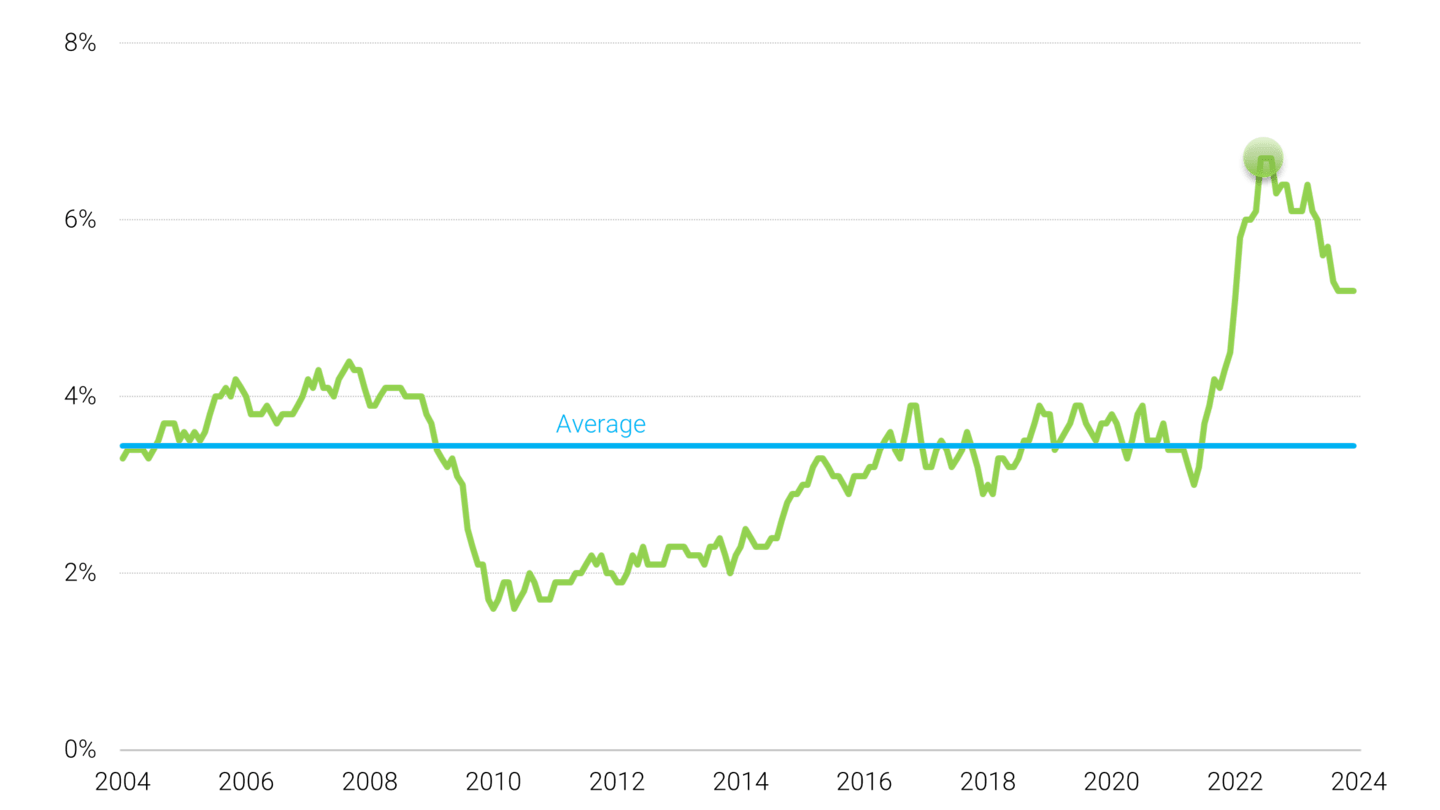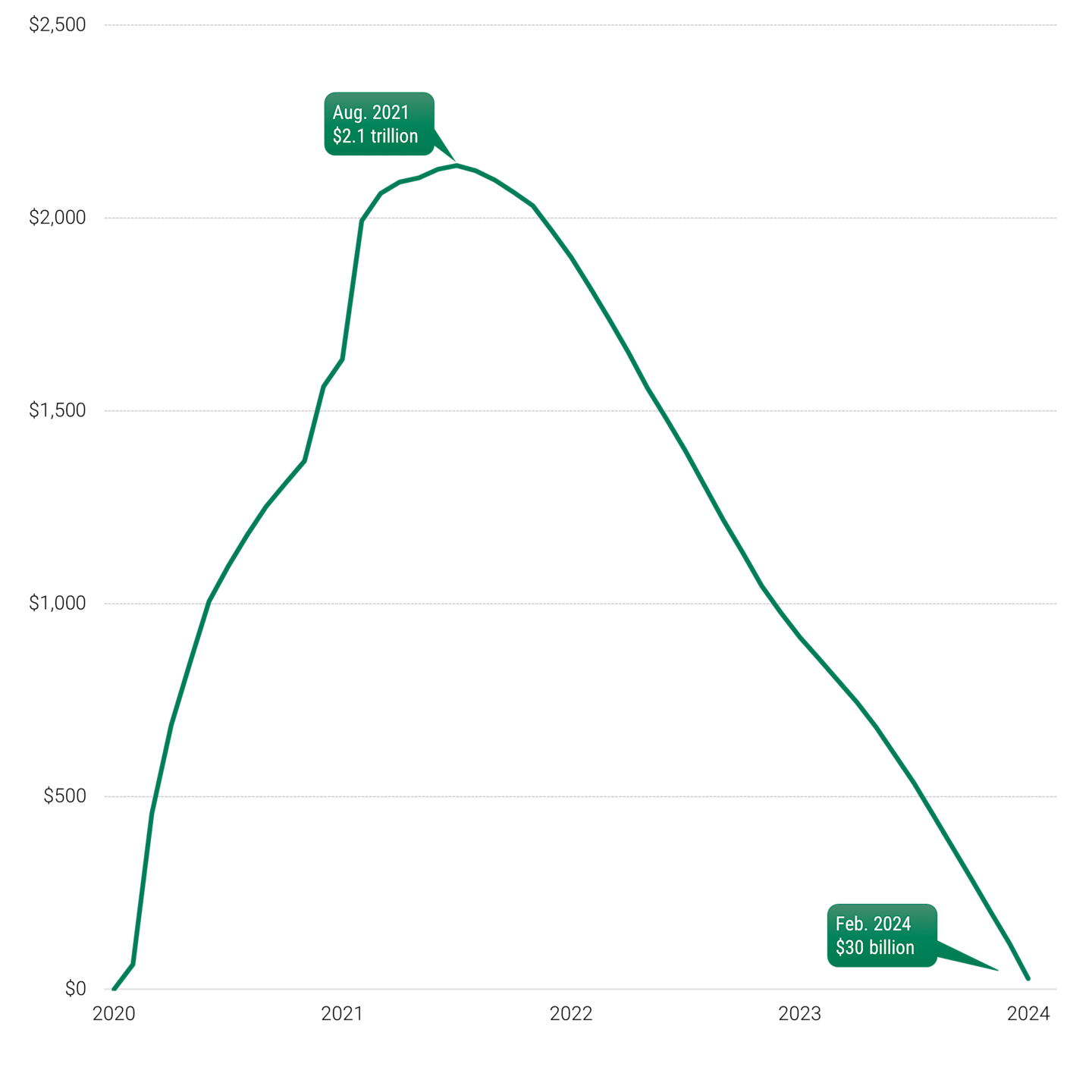Are Consumers Tapped Out?
Market Minute | A consumer spending spree has kept the economy afloat. But as the tides turn, will growth sink?

Key Takeaways
Consumers face challenges with slowing wage growth, dwindling savings and easing spending.
Excess pandemic savings have nearly depleted, impacting post-pandemic spending trends.
High interest rates and lending constraints contribute to declining discretionary spending, impacting economic growth.
Consumers Drive the Economy
Consumers represent the largest contributor to the U.S. economy, accounting for nearly 70% of the nation’s gross domestic product (GDP).
When consumers spend, GDP expands — a dynamic that helped the U.S. economy avoid a recession in 2023. But just as consumers get credit for keeping the economy afloat, they will likely drive an economic pullback.
Here’s why:
Wage growth is slowing.
Savings are dwindling.
Discretionary spending is easing.
Wage Growth Is Slowing
Wage Growth Has Declined Since Its 2022 Peak
Annual Percent Change in Wages

Data from 1/31/2004 - 1/31/2024. Source: FactSet.
- Wage growth peaked at all-time highs in mid-2022, fueling several quarters of solid economic growth.
- Since then, wage growth has steadily declined.
- We expect it to settle near longer-term averages, or 3.4% year over year.
Savings Are Dwindling
- The total excess savings U.S. consumers amassed during the pandemic supported a surge in post-pandemic spending.
- Excess savings soared to $2.1 trillion in August 2021.
- Since then, consumers have nearly depleted those reserves, which sank to $30 billion in 18 months.
Excess Savings Are Down, Too
Pandemic Era Cumulative Excess Savings in $Billions

Data from 1/1/2020 - 2/29/2024. Source: FactSet, Federal Reserve Bank of San Francisco, American Century Investments.
Discretionary Spending Is Easing
↘ Less spending
¹State of the US Consumer: March 2024, Deloitte Center for Consumer Industry; data as of March 22, 2024.
↘ Less access to financing
²Federal Reserve, Senior Loan Officer Opinion Survey on Bank Lending, January 2024.
The Bottom Line
As wage growth slows, savings diminish and discretionary spending fades, we expect U.S. GDP growth to follow suit.
In our view, staying broadly diversified remains a prudent strategy as growth slows. But tactical investment shifts may offer opportunity.
High-quality stocks from companies with competitive advantages and earnings durability.
Stocks in defensive sectors (utilities, health care, consumer staples).
High-quality bonds.
Longer-duration strategies.
Explore Previous Market Minutes
The Hard Truth About Soft Landings
History indicates recessions — not soft landings — typically follow Federal Reserve rate-hike campaigns.
Eyeing a Bounce-Back for Bonds
We think the anomalies of 2022 have unleashed opportunities for fixed-income investors in 2023.
How Are Soaring Prices Changing Consumer Spending?
We think the surprising shift in behavior changes the outlook for consumer-oriented sectors.
Why Quality Stocks Now?
We think holding quality equities is always in style, but current conditions appear particularly favorable.
Weathering the Supply Chain Storm
Small companies are particularly vulnerable to supply chain problems, but we think some are well-positioned to ride out the storm. Here are the characteristics we look for.
Download PDF
Could Copper Be the New Oil?
We think demand for the industrial metal will grow for decades. That creates investment opportunities, but there are environmental and social consequences.
Download PDF
Author
Download Market Minute
Are Consumers Tapped Out?
Duration: A measure of the price sensitivity of a fixed-income investment to changes in interest rates. The longer the duration, the more a fixed-income investment's price will change when interest rates change.
Excess savings: The additional funds that many individuals accumulated during the pandemic due to changes in spending patterns and government stimulus measures.
Investment return and principal value of security investments will fluctuate. The value at the time of redemption may be more or less than the original cost. Past performance is no guarantee of future results.
Diversification does not assure a profit nor does it protect against loss of principal.
The opinions expressed are those of American Century Investments (or the portfolio manager) and are no guarantee of the future performance of any American Century Investments' portfolio. This material has been prepared for educational purposes only. It is not intended to provide, and should not be relied upon for, investment, accounting, legal or tax advice.





